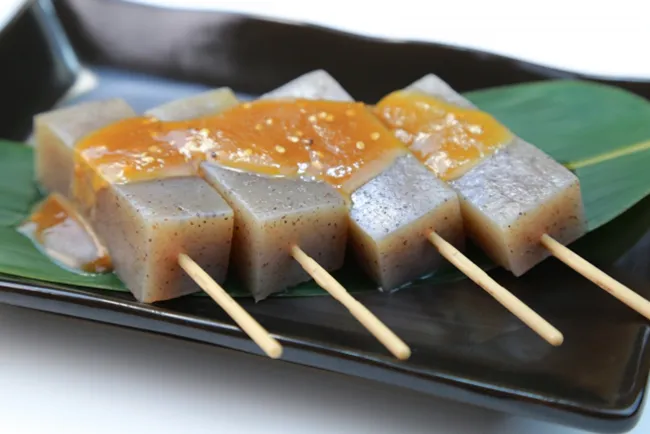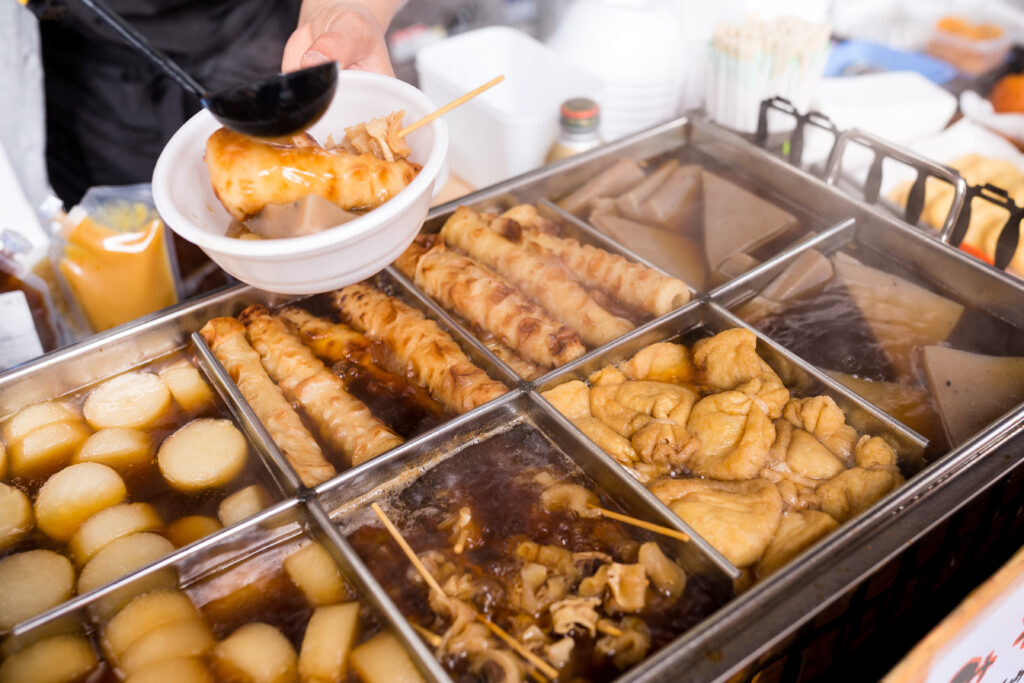A Long History in Japan
Konnyaku has been part of Japanese cuisine for more than a thousand years. It was first introduced from China as a medicinal plant during the Nara period (around the 8th century), and over time, it became a staple food. By the Edo period (17th–19th centuries), konnyaku was being made in various forms—blocks, noodles, and even small balls—and could be found in everyday meals across Japan.
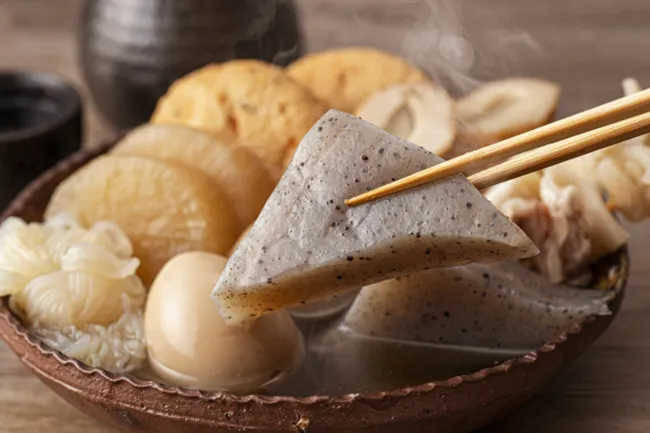
How It’s Made
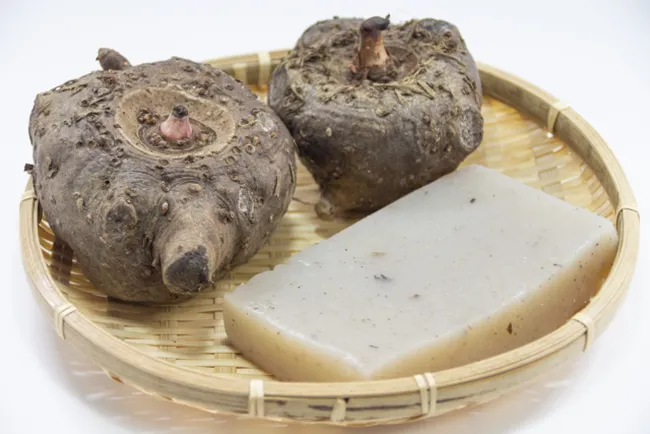
Konnyaku is made from the root of the Amorphophallus konjac plant, which is ground into a powder, mixed with water, and then solidified with a natural coagulant such as calcium hydroxide. The result is a firm, bouncy texture that can be sliced, shaped, or cut into thin noodles (shirataki).
Despite its simple ingredients, making konnyaku requires skill to achieve the perfect texture—smooth yet slightly chewy.
How Widely It’s Used in Japan
Today, konnyaku is found in nearly every Japanese supermarket and is used in both home cooking and restaurant dishes. From stews and soups to salads and even desserts, it plays a quiet but important role in Japanese cuisine. Many people eat it regularly as part of a healthy diet because it’s filling but extremely low in calories.
Popular Dishes Featuring Konnyaku
Here are some of the most popular and beloved Japanese dishes that include konnyaku:
| Dish | Description |
|---|---|
| Oden (おでん) | A comforting winter stew with various ingredients such as eggs, daikon radish, fish cakes, and konnyaku simmered in a light soy-based broth. |
| Miso Dengaku (味噌田楽) | Thick slices of konnyaku grilled on skewers and topped with sweet miso sauce—a delicious street food or side dish. |
| Sukiyaki (すき焼き) | A hot pot dish featuring thinly sliced beef, vegetables, tofu, and shirataki noodles made from konnyaku. |
| Nikujaga (肉じゃが) | A home-style simmered dish of meat, potatoes, and shirataki, where the noodles absorb the sweet-savory flavor of soy sauce and sugar. |
| Sashimi Konnyaku (刺身こんにゃく) | A chilled and beautifully plated version served with vinegar-miso sauce, perfect for summer. |
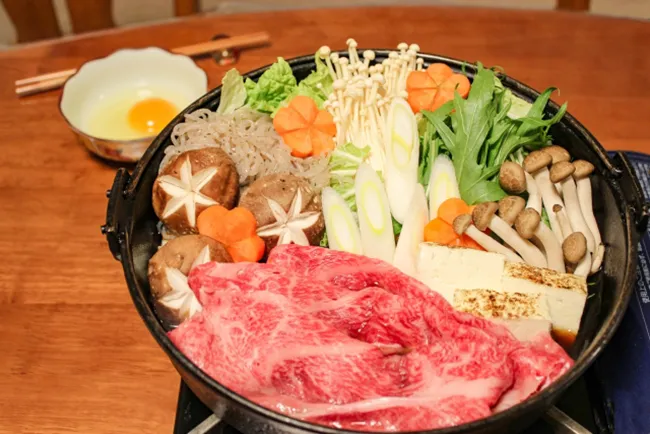
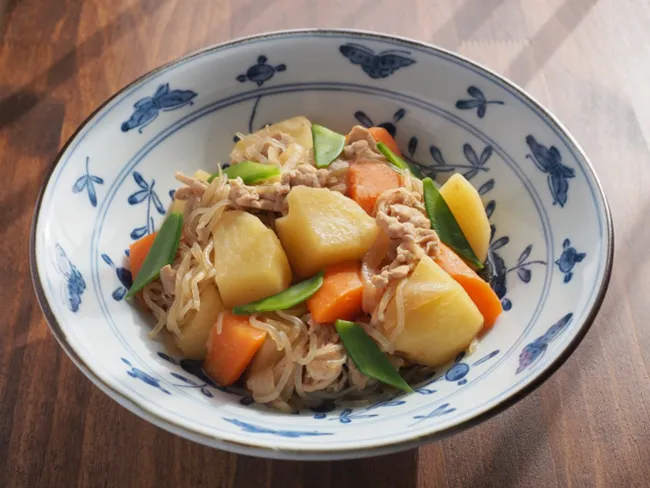
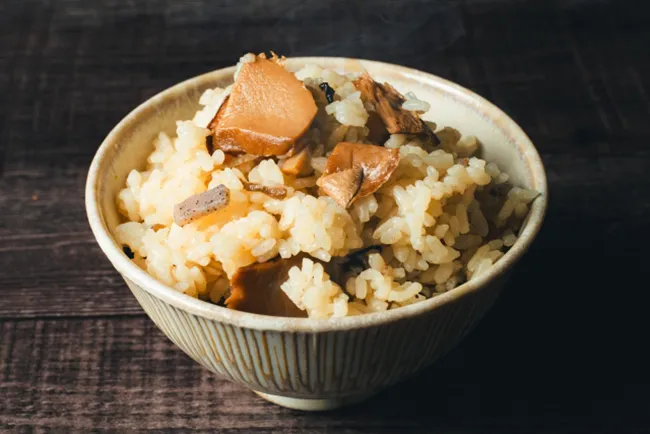
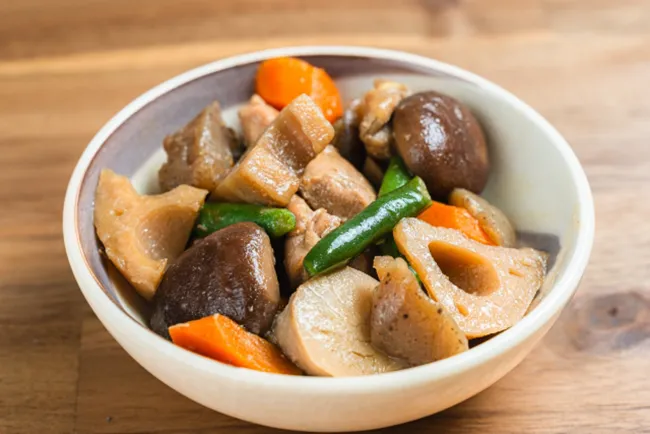
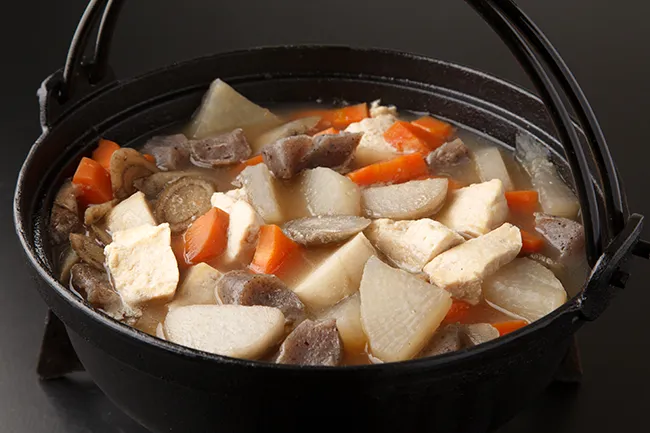
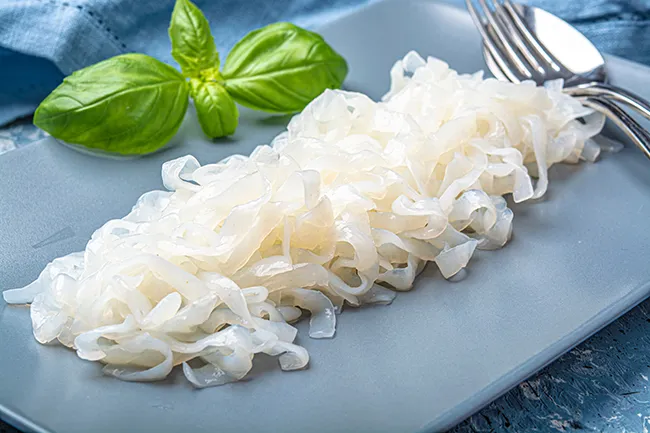
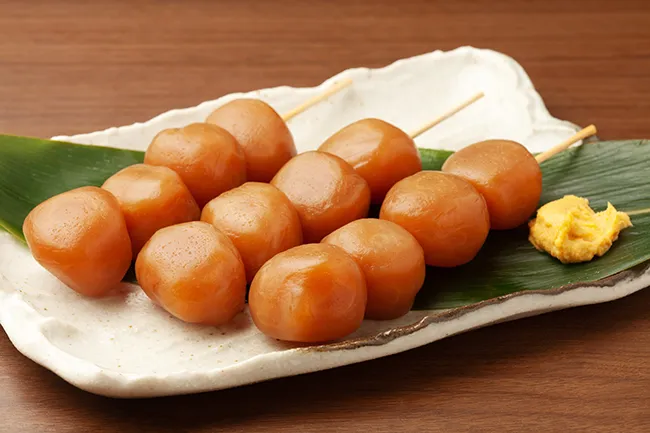
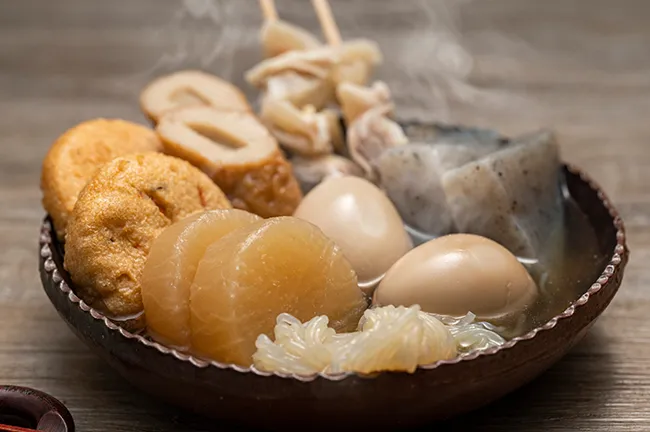
Nutritional Benefits
Konnyaku is composed of about 97% water and 3% dietary fiber called glucomannan. This soluble fiber helps:
- Improve digestion and prevent constipation
- Reduce cholesterol and stabilize blood sugar
- Promote a sense of fullness, which aids in weight control
Because of these benefits, konnyaku is sometimes referred to as “the miracle food for dieters.” It’s also vegan, gluten-free, and allergen-friendly, making it suitable for many types of diets.
A Unique Japanese Ingredient with Global Appeal
While konnyaku originated from a plant native to Asia, it’s in Japan that this ingredient truly found its place as a daily food. In recent years, shirataki noodles—made from konnyaku—have become popular around the world among those following keto, vegan, or low-carb lifestyles.
Simple, healthy, and deeply rooted in Japanese tradition, konnyaku represents the essence of Japanese food culture: balance, health, and respect for nature’s ingredients.
Conclusion
Konnyaku may look modest, but it’s one of Japan’s most fascinating traditional foods. From street food stalls serving miso dengaku to warm bowls of oden in winter, this humble ingredient continues to nourish and delight. Whether you try it in a restaurant or cook it at home, konnyaku offers a taste of Japanese culture in its purest, healthiest form.
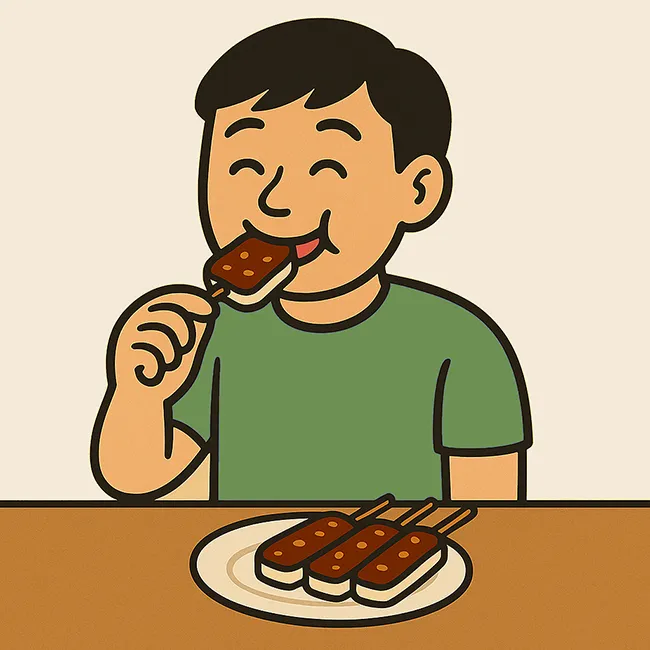
Thanks for reading!
If you enjoy my posts, your support really motivates me ☕

